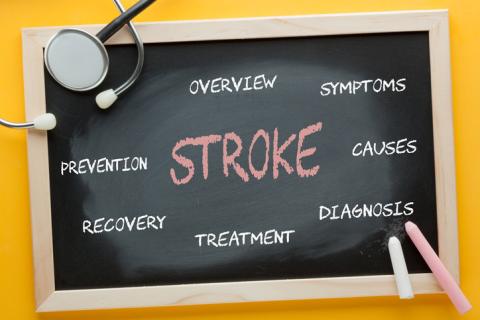Eight Myths and Facts About Strokes
Myth #1: The symptoms of stroke are all the same.
Let’s start with this one, because recognizing the symptoms of stroke and getting prompt medical attention is so important! Maybe you have heard of the F.A.S.T. acronym, which reminds people to check for Face drooping, Arm weakness and Speech difficulty (the T is for Time to call 9-1-1). Depending upon which area of the brain is affected, and how severely, a person who’s having a stroke may also experience confusion, vision problems, trouble walking or a sudden, severe headache.
Myth #2: There could be other causes for these symptoms, so it’s sensible to wait a while before seeking medical help.
Seeking medical attention at the first suspicion of a stroke is so important! There are many things doctors can do to minimize damage from a stroke, but recovery depends in part on prompt treatment during the “the golden hour” when the doctors can do most to halt damage to the brain. When in doubt, call 9-1-1 right away!
Myth#3: Only older people have strokes.
This misbelief could cause a younger person to waste precious minutes before seeking treatment for a stroke. In fact, strokes happen to people of every age, even babies. According to the American Academy of Neurology, today the rate of stroke among young people is rising, with more people in their 30s and 40s having strokes than ever before.
Myth #4: Most strokes happen to men.
This is another dangerous myth. In fact, the Centers for Disease Control and Prevention (CDC) says that women are at higher risk not only of having a stroke, but also of suffering long-term disabilities as a result. Certain risk factors are particular to women, such as pregnancy-related diabetes and hormonal changes.
Myth #5: We can’t do anything to prevent strokes.
In fact, certain lifestyle choices can reduce our risk of a stroke, especially through lowering blood pressure, which is the most common controllable cause of stroke. These choices include: quit smoking, eat a healthy diet, maintain a healthy weight, get enough exercise, reduce stress, and follow your doctor’s recommendations for controlling high blood pressure and other health conditions such as high cholesterol and diabetes. This can also reduce the risk of having another stroke.
Myth #6: Damage from stroke is always permanent.
According to the National Stroke Association, 10% of stroke survivors recover completely and another 25% recover with only minor impairments. While a certain number of stroke survivors will have permanent disability, stroke rehabilitation can go a long way in improving a patient’s outcome. Stroke rehabilitation might include physical, occupational and/or speech therapy and help from rehabilitation nurses, mental health professionals and social workers.
Myth #7: Stroke recovery ends after a few months.
There’s a misbelief that stroke patients regain all the abilities they are going to after a few months, but the American Stroke Association says many patients continue to improve over the course of several years. The success of stroke rehab depends to an extent on the severity of the stroke, but also on a patient’s perseverance during rehab and the quality of the rehab team. The association notes that up to a third of patients who could benefit from stroke rehab fail to take advantage of this important support, or give up too soon.
Myth #8: The only person affected by stroke is the patient.
The National Family Caregivers Association says that up to 80% of stroke patients are assisted by family members during their recovery—and these family members, too, can be very much affected by the stroke. Suddenly launched into the caregiver role and a changed relationship with their loved one, they might neglect their own health and well-being—indeed, research shows that they can raise their own risk of a stroke by 23%! Family caregivers should prioritize their own health by eating right, getting enough sleep, and making time for exercise. Ask for help! You can’t do it alone. Contact a local stroke survivor family support group, the hospital discharge planner, an aging life care professional (geriatric care manager) or a rehabilitation facility.
To find many more resources about stroke prevention, treatment and diagnosis, check out information from the National Institute of Neurological Disorders and Stroke.
